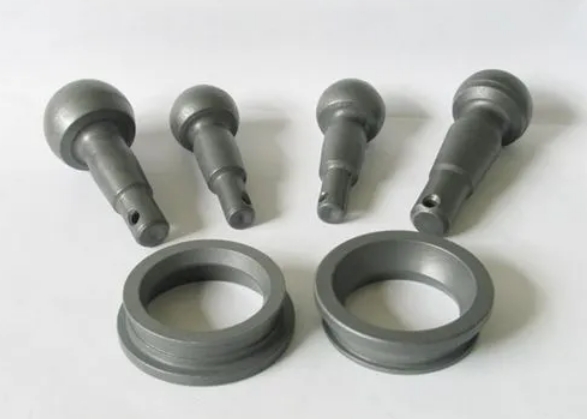What is the effect of phosphating treatment?
Time:2023-11-10 16:19:11 Source:未知 Click:次

In the metal processing industry, phosphating treatment is a widely used surface treatment method. It improves the corrosion resistance, wear resistance, and electrical insulation of metals by forming a layer of phosphate on their surface, thereby extending the service life of products. However, many people are not familiar with the effects of phosphating treatment. This article will provide you with a detailed introduction to the advantages and effects of phosphating treatment.
Firstly, phosphating treatment enhances the corrosion resistance of metals. During the phosphating process, a protective layer of phosphate is formed on the metal surface, effectively preventing it from contacting the external environment. This protective layer inhibits the oxidation reaction of the metal, reducing the occurrence of corrosion. Therefore, metals treated with phosphating have better corrosion resistance and can be used for a long time in harsh environments without being corroded.
Secondly, phosphating treatment improves the wear resistance of metals. The phosphate layer has high hardness and density, which can effectively resist friction and wear. After forming the phosphate layer on the metal surface, the wear rate of the metal decreases significantly, prolonging its service life. Especially in parts that require frequent movement, such as bearings and gears, phosphating treatment can significantly improve their wear resistance and reduce maintenance and replacement frequency.
In addition, phosphating treatment also enhances the electrical insulation of metals. The phosphate layer has good insulating properties, effectively preventing the conduction of current on the metal surface. Therefore, in situations where good electrical insulation is required, such as electronic devices and motors, phosphating treatment can improve product reliability and safety.
Furthermore, phosphating treatment is environmentally friendly. The phosphate used in the phosphating process is harmless to the environment and does not cause pollution. At the same time, waste liquid generated during phosphating can be treated and recycled for reuse, reducing resource waste.
However, there are also some limitations to phosphating treatment. Firstly, it can only be applied to iron and steel and other metals that can react with phosphates. For other metal materials such as aluminum and copper, phosphating treatment cannot achieve ideal results. Secondly, the phosphating process is relatively complex and requires certain equipment and technical expertise. Therefore, it is recommended to choose professional manufacturers or technicians for operation when undergoing phosphating treatment to ensure optimal treatment effects.
In conclusion, phosphating treatment is an effective surface treatment method that improves the corrosion resistance, wear resistance, and electrical insulation of metals. It has wide applications in various fields such as automotive manufacturing, aerospace, electronics, etc. If you have a need for phosphating treatment, it is recommended to choose professional manufacturers or technicians for operation to ensure the best treatment results.






 Customer service 1
Customer service 1  Customer service 2
Customer service 2